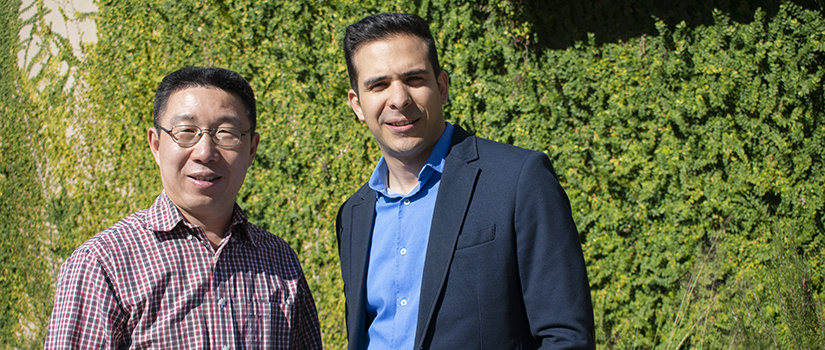By Leigh Thomas | January 30, 2020
Erfan Goharian and Song Wang at the University of South Carolina College of Engineering and Computing have been awarded a grant to develop an image dataset of water objects from Microsoft AI for Earth. The multidisciplinary research project will use engineering techniques to identify the presence of water, and then using artificial intelligence, it will develop models that predict its impact on the surrounding environment.
“This research is essentially the intersection of civil engineering, water resource management and artificial intelligence.”
- Erfan Goharian, Assistant Professor of Civil and Environmental Engineering
Extreme conditions such as droughts and floods cause significant social and economic damages when they impact communities and ecosystems. For example, weather-related flooding is a major cause of transportation disruptions, road closures and traffic congestion. While communities use various risk mitigation strategies to alleviate the impact, the complexities of water resources make this a challenging task.
“The problem in water resources is that our predictions and understanding are not as powerful as they could be,” says Goharian.
He explains that tools currently used to measure rainfall and other sources of water, such as gauges, sensors or satellite images, do not provide enough data to accurately predict floods and droughts. For instance, it is impractical to use gauges to detect the amount of water in an entire river, and satellites, while useful on a larger scale, do not provide enough detailed information to measure the capacity of a lake.
To address this lack of data, Goharian, Wang and their students will collect and label thousands of “ground truth images” from sources such as social media, surveillance cameras and drones to form a water-labeled dataset. These images can then be studied to identify objects related to water, whether natural resources, such as water bodies, snowpack or rivers; or within infrastructure, such as dams, pipes or aqueducts.
Goharian explains that this process is extremely complex due to the irregular shape of water objects, which is why artificial intelligence plays an integral part. Computers will be trained in the identification and labeling of the images, and each pixel will be analyzed for the presence of water.
“This research is essentially the intersection of civil engineering, water resource management and artificial intelligence,” Goharian says.
Once the image dataset is complete, computer models will be developed to identify the warning signs of flooding. The models will track the propagation of water and provide numerical information for better flood prediction and management. The image dataset will be the first water resource management tool of its kind that is available to the public.
“We believe our collaboration with Microsoft AI for Earth will help us develop an intelligent flood detection and monitoring system,” says Goharian. “Public dissemination of the dataset will build the foundation needed for many other applications in earth and water science and their related issues around the world.”
Microsoft AI for Earth puts Microsoft cloud and AI tools in the hands of those working to solve global environmental challenges. AI for Earth grants provide access to Microsoft resources to support projects that change the way people and organizations monitor, model and manage Earth’s natural systems.
Song Wang is a professor in the department of Computer Science and Engineering. His research interests include computer vision, image processing and machine learning.
Goharian is an assistant professor in the department of Civil and Environmental Engineering. His research focuses on water resources systems analysis and integrated management of water resources.
